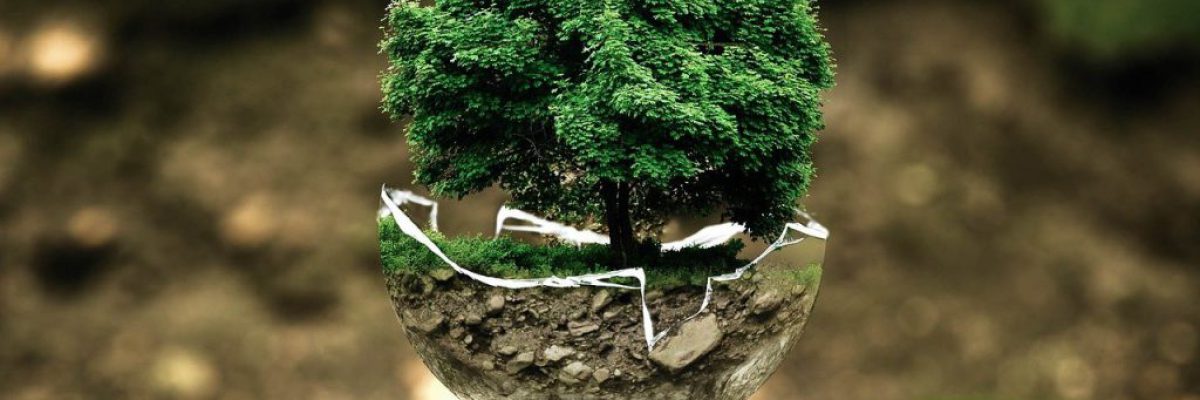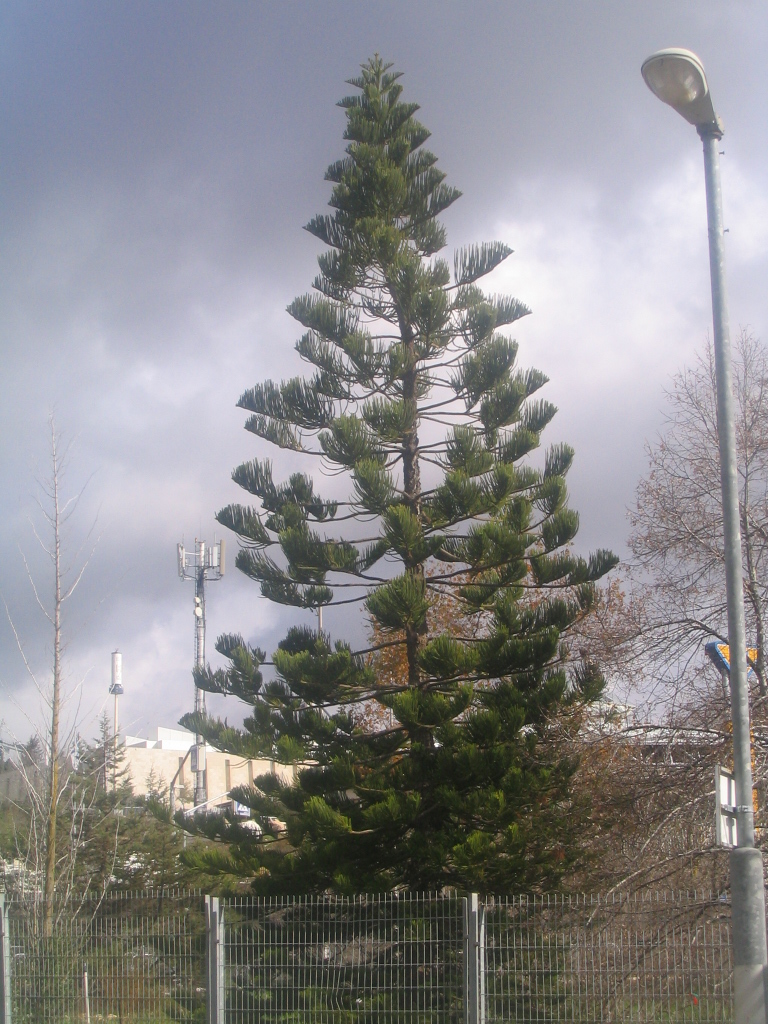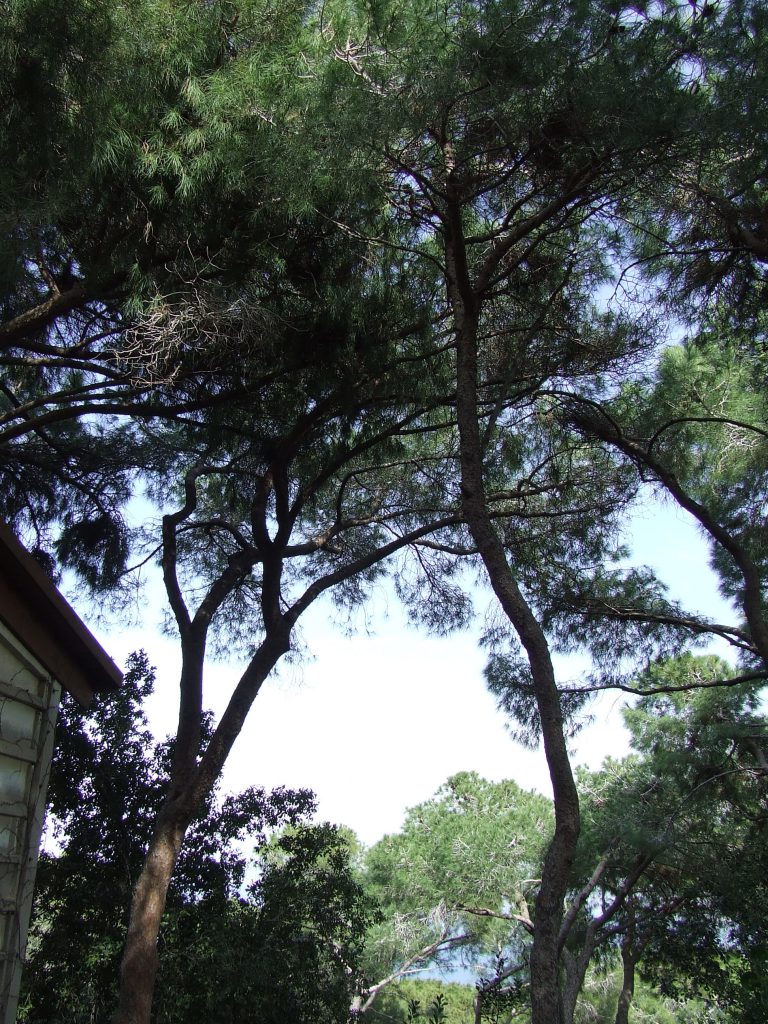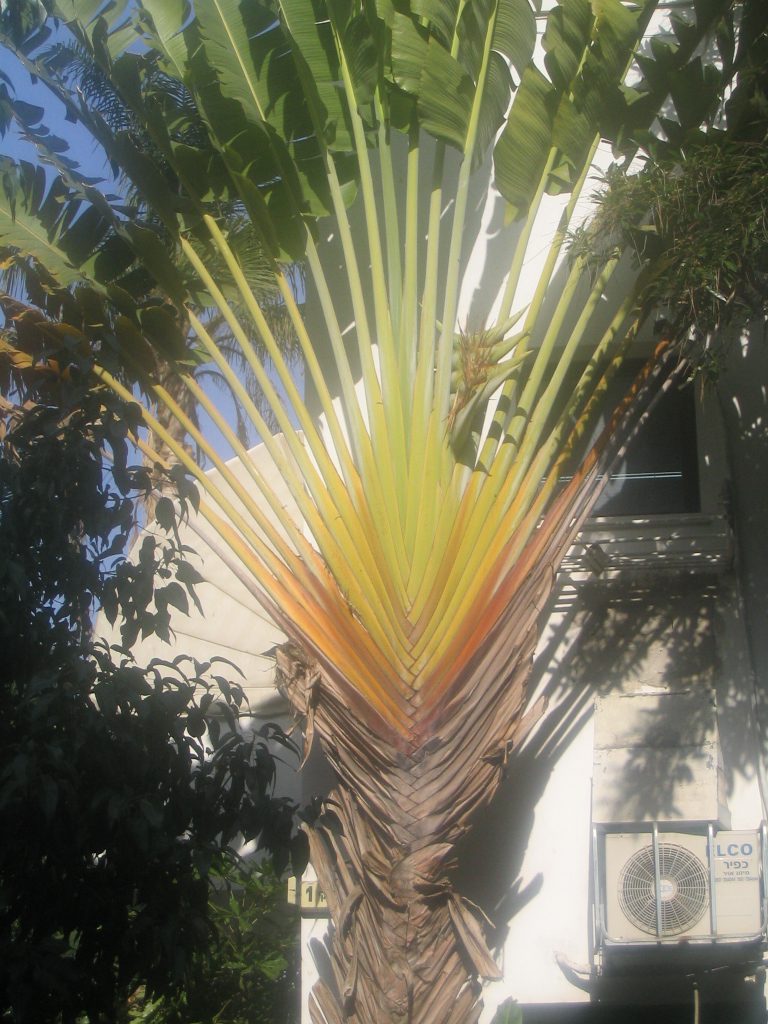The tree is the largest creature on earth. Growing trees is possible despite the building and developing processes. One tree provides a major quantity of oxygen, absorbs pollution, and moderates the temperature in its area. Therefore, tree preservation is the most sustainable tool in every space and environment.
How does a little sprout turn into a colossal tree?
The stem of the plants:
The stem of the leafy plant develops into a thick tree trunk. The leafy stem has a few supportive tissues, its color is green, it is highly flexible, and covered in epidermis (external skin). the woody stem, which we call tree trunk, contains many supportive tissues. Most of the time it is not green, due to the periderm (the layer that replaces the epidermis) development. The periderm constructs the thick trunk tissue, which has many cork cells and wax that divide it from its surroundings.
The role of the stems and the trunks:
– The stem transfers water and nutritional elements from the roots to the leaves and transfers sugars created by photosynthesis from the leaves to the organs that use it.
– The stem carries the leaves, which are responsible for photosynthesis.
– The stem gives the plant mechanical stability.
– The tree trunk, or the thick stem, also carries the weight of the tree or bush branches.
Every stem in every plant is made out of a shoot and leaves on its joints. In their axil are the buds. The axillary buds will always be in the axils of the leaves along the stem. The terminal bud is at the head of the stem. Every bud is made of Meristem (embryonic tissue) that differentiate into tissues with different roles. The buds are made from embryonic cells that can differentiate and change into inflorescence or branches. The bud’s differentiation is determined by factors of the surroundings and inner factors. The plant feels the number of cold hours it is exposed to and the length of the daylight. That is how it knows if it is time to flower or to shed leaves. The plant reacts to the amount of daylight it is exposed to with a pigment molecule called Phytochrome. the Phytochrome changes according to different circumstances, and activates, changes, or holds processes in the plant. For example, as autumn comes, the deciduous trees feel the days getting shorter and create a disconnecting tissue which makes the leaves disconnect from the branch they are attached to and fall. Temperature also plays a role in this process.
The buds:
The terminal bud induces the development or lack of development on the branches underneath it. The bud secretes a hormone that suppresses the growth of side branches from axillary buds. The terminal bud is the ruler. Some of the trees have an increased terminal bud rule- meaning, the terminal bud is very active. These plants have a monopodial growth, in which the primary terminal bud grows facing upwards and continues being active. Such trees include Cupressus, Araucarias, some Pines trees, some Populus trees, etc. In many plants with sympodial growth, there is a growth of side branches from the axillary buds and the terminal bud is not very active as the tree matures. These plants have lots of branching, and the control (weak terminal bud rule) over each branch is from the terminal bud under it, but it is weak. Such trees are wide-view trees, including Oaks, Poincianas, Blue Jacarandas, Celtis Australis, etc.
The plant goes through many developmental stages as it matures. Many trees have a known youth stage (juvenile). At this stage, sometimes some leaves appear different than mature tree leaves. For example, the Acacia Saligna sprouts during their juvenile state have feathery leaves, much like the common Acacia in Israel, yet when they mature, they have a single lengthy leaf from the axil of every joint along the stem. Another example is the pines with no scaley leaves in the Pine tree. The mature stage is characterized by morphological changes and developmental changes. As trees mature, they go through the ripening stage (=the creation of flowers and inflorescence or pinecones from buds). The ripening happens as the seasons change and has a direct connection to the changes in the length of the daylight and the temperature changes. The tree “feels” these stimuli with its Phytochrome and with the secretion of growth regulators from its body or roots. The growth regulators are plant hormones. Humans use them when they want to root plant cuttings or create flowers that will develop into fruits in fruit trees, so they can have more yield sooner than expected.
Cambium – the tree’s embryonical tissue:
The cambium is an embryonical tissue along the stem that branches out in branches and leaves. This tissue is made from embryonic cells that differentiate into tissues and organs. They create the transportation vessels of the tree, transporting water and minerals from the roots upwards. They are called xylem. On the exterior part, they create the Phloem tissue that passes the sugars produced by photosynthesis from the leaves downwards.
The cambium continues creating xylem and phloem cells as it matures and the stem thickens. In the growth stages, you can see the interfascicular cambium (cambium made from standard stem cells between the transportation tissues). A continuous ring is created along the stem’s perimeter this way. Secondary xylem is created on the interior and secondary phloem on the exterior. This is how the thickening of the stem starts. The xylem cells are resilient to rotting and destruction. They have many uses in industries such as shipping, carpentry, building, etc. The cambium continues to create cells that join the xylem and phloem. As the stem continues to thicken more and more xylem and phloem cells are being formed. Since the xylem is formed inwards, the stem thickens, and as the years pass, the trunk gets very thick and is mostly constructed out of xylem cells. The xylem cells are dead cells with a hollow interior and thick woody exterior.
How does the water flow up to the top of the trees?
The role of the xylem in water transportation demands larger volume and stronger cells, which can work opposing gravity, since the water is being transferred upwards. Moving the water upwards is done by the power of adhesion-cohesion that connects water molecules to each other and creates some sort of a tube. This happens thanks to the anomaly of the water. If the water acts like a tube, puling the top part of the tree will pull all the tube to its deepest roots. How does this happen? What is the force that pulls the water upwards?
The water is being pulled to the top part of the tree by their evaporation from the stomas in their leaves (the stomas are openings in the leaves that absorb gases for photosynthesis and evaporate water). The water evaporation from the stomas along the tree is what causes the upward pulling of the water tube, and like that the water rise and nourish the leaves and flowers. The evaporation process, which is considered problematic is actually the basis of the tree’s existence.
The mature trunk:
As the trunk matures, the epidermis is torn from the inner pressure. In this stage the woody periderm tissue is formed. The periderm is called bark. In potatoes, for example, we can see the periderm- the peel of the bulb which we usually peel off. The potato is a thickened stem; therefore, it is covered in periderm. Cork cells are inpenetrable and that is how they protect the inner tree parts from over evaporation, mechanical harms, and pests. The periderm has cambium in it, an embryonic tissue which creates new periderm and cork cells. The external periderm is torn and peels off as it furthers away from the cambium and loses grip on the tree. We can see it in trees like Eucalyptus, where the bark withers off and falls and big chunks, while a new layer replaces it from underneath. That is why Eucalyptus trunks look like they have many shapes and spots. The Quercus Suber tree’s periderm does not tear off, and the tree bark is used to make the natural cork we are familiar with. In the Quercus Suber tree, the cork layers are created behind each other inwards, creating the typical thick structure of the cork. Sometimes we can see elongated cracks on trunks (like in Elderberry and Tecoma bushes). These are the lenticles (used for gas exchange with the surroundings). There is no cork tissue (periderm) formation in the lenticles.
Yearly rings – can they tell the age of the tree?
The yearly rings appear in trees with growth rhythm that changes according to seasons. How does this happen? The ring is formed by the formation of new xylem cells every year. The ring-shaped pores are formed when big xylem cells with large inner space are created in the middle of the growth season, while in the end of the growth season the cells are smaller with smaller inner spaces. Small cells appear darker while larger cells appear brighter when looking at a truck dissection. The boundary between the rings is the smaller cells. As the next growth season starts, larger cells are formed immediately, so the boundary between them is very distinct. This is how the yearly rings are being told apart from each other. Some trees do not have visible rings as they create similar volume cells all year long.
The width of the yearly rings is affected by the tree’s surroundings- light, temperatures, water availability, pests, and diseases. We can analyze tree trunks and learn from them about the environment conditions and the climate throughout the years. Some trees can create a few rings a year (Cupressus). Tropical trees have almost no visible changes in their growth rate and therefore have no rings (Fig tree, White Acacia).
In monocotyledon trees (Palm trees) there is no thickening of the cambium, and thus no secondary xylem. The existing thickening is the primary xylem only, and it occurs together with the leaf growth by the cambium in the root of the leaf. In Yucca, there is some secondary thickening, and they seem to have some kind of trunk. These trees have no yearly rings, in fact, they are not even trees!
In mature trees, the primary xylem in the core blocks sometimes. These blockages are called Tyloses. Different materials accumulate and create a dark color in the center of the trunk, and the primary xylem stops. The dark xylem’s resilience to decomposition is stronger, as the accumulating materials are glues and resin that are not easily damaged.
And what happens underground?
It is important to mention that the tree roots also thicken and create secondary xylem and bark. The mature roots are valuable for tree support. A cork peel is formed on the mature root, and it is no longer a water absorber. Water absorption occurs only on juvenile roots in the edge of the root system, which is why it is important to keep the juvenile roots with the suckers in their ends intact when moving trees to a new place, for example.
www.drakefet.com. dryy@zahav.net.il












